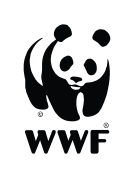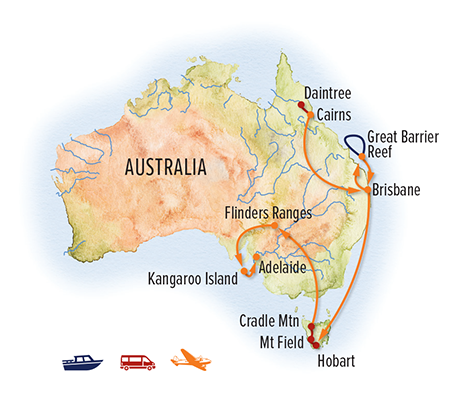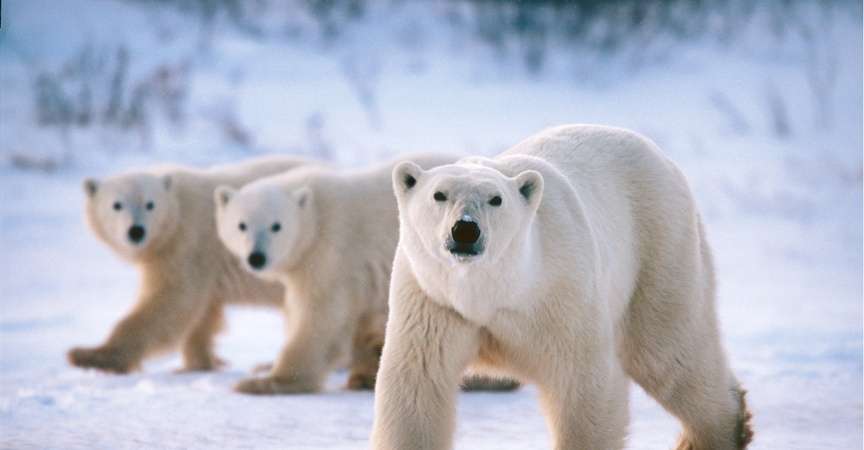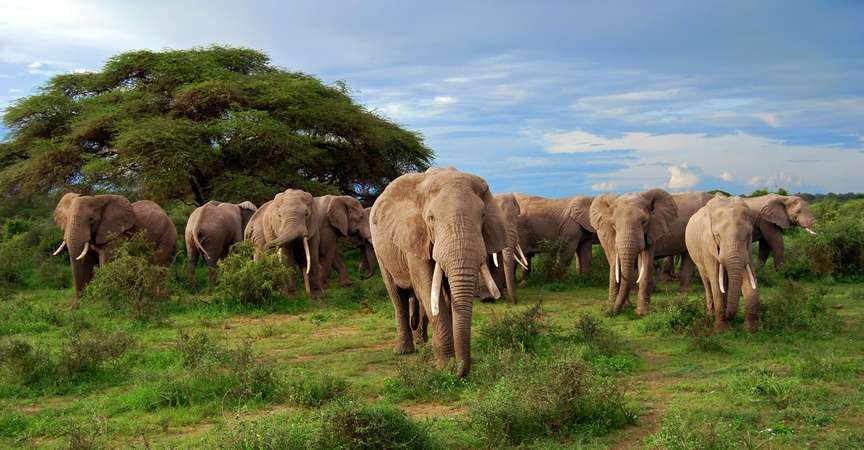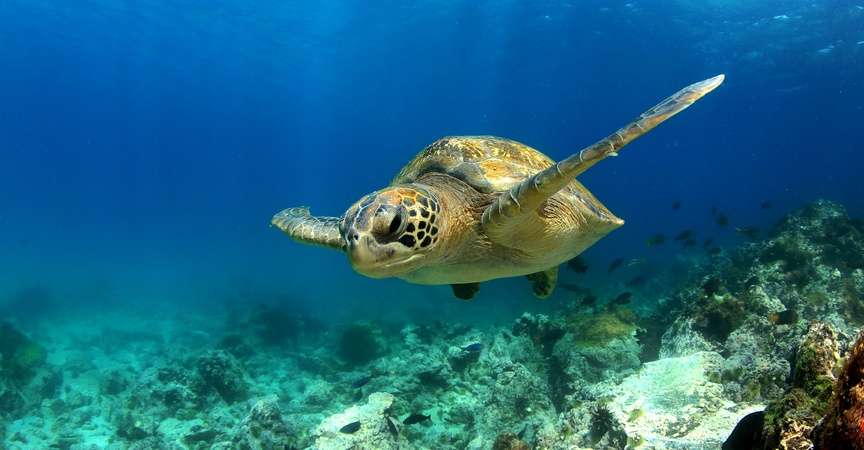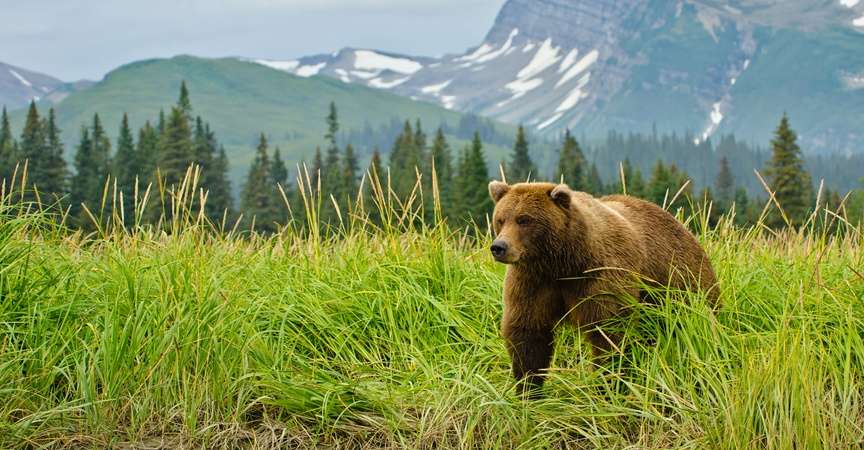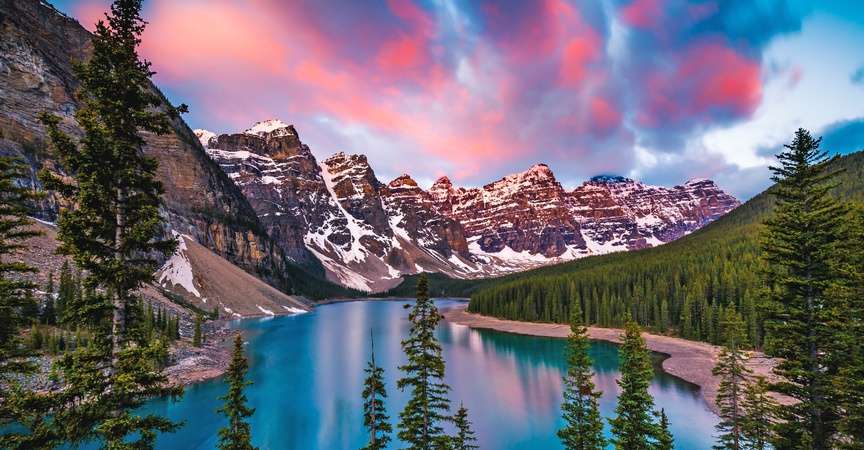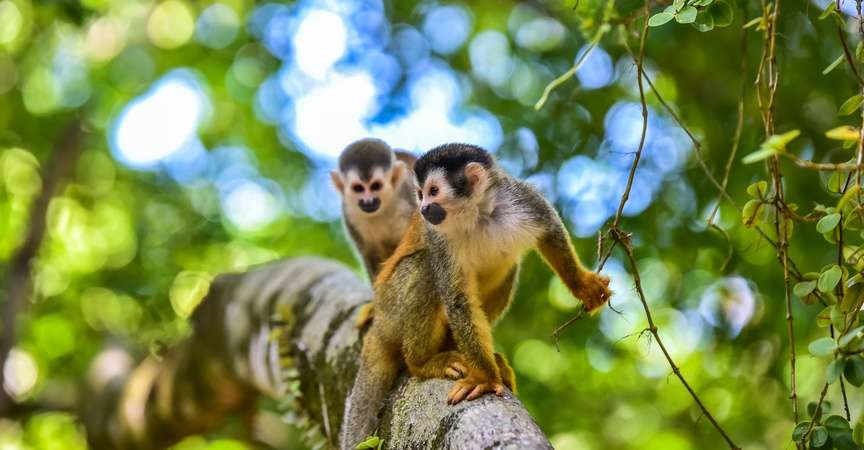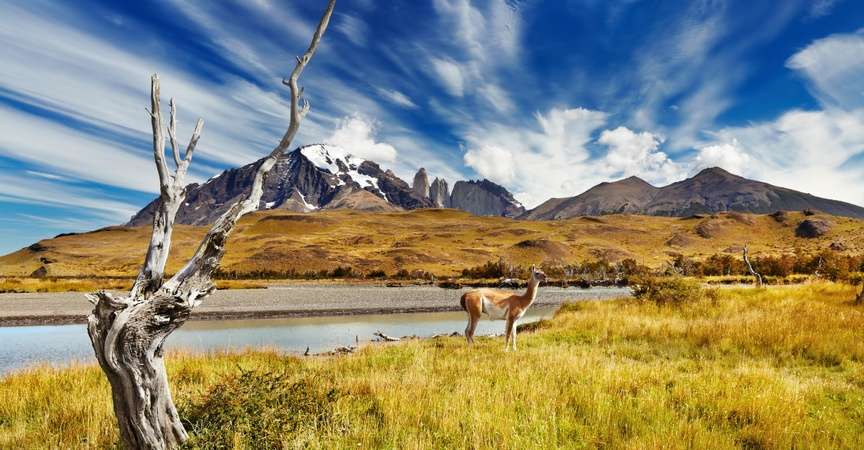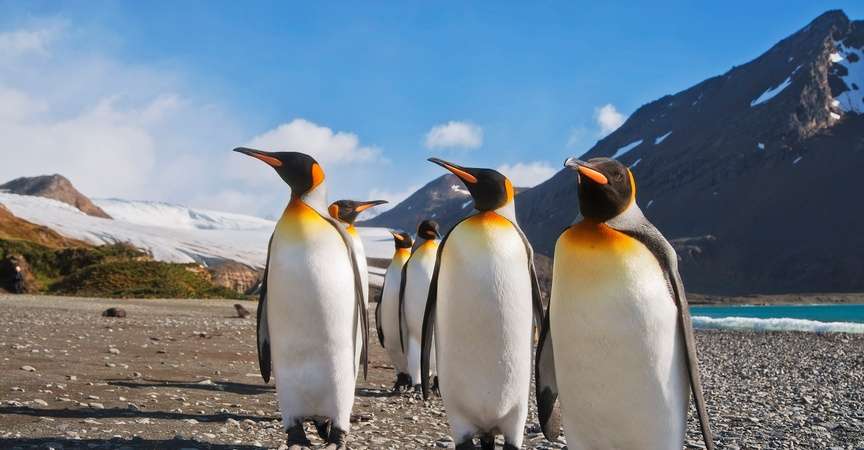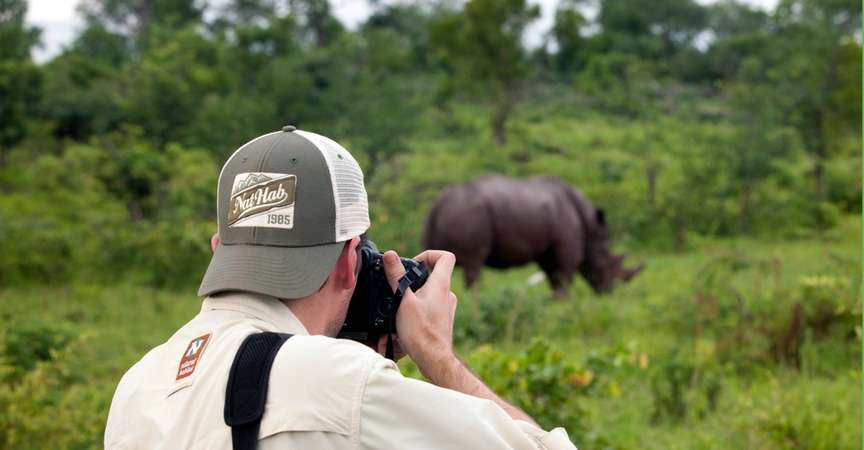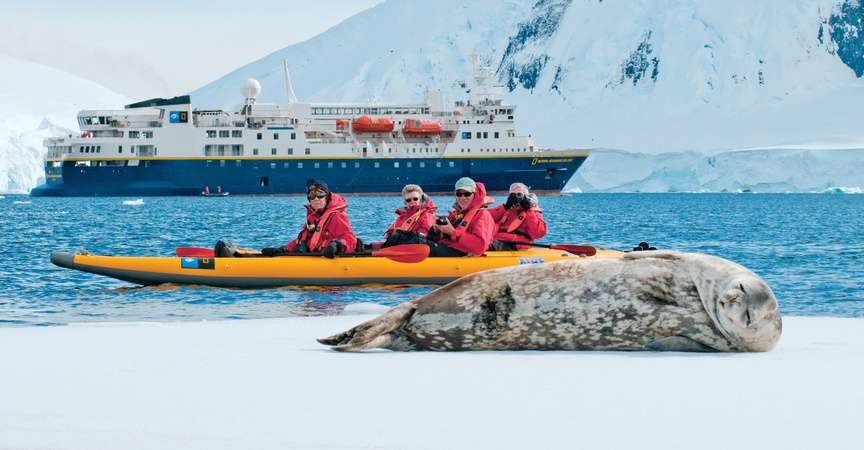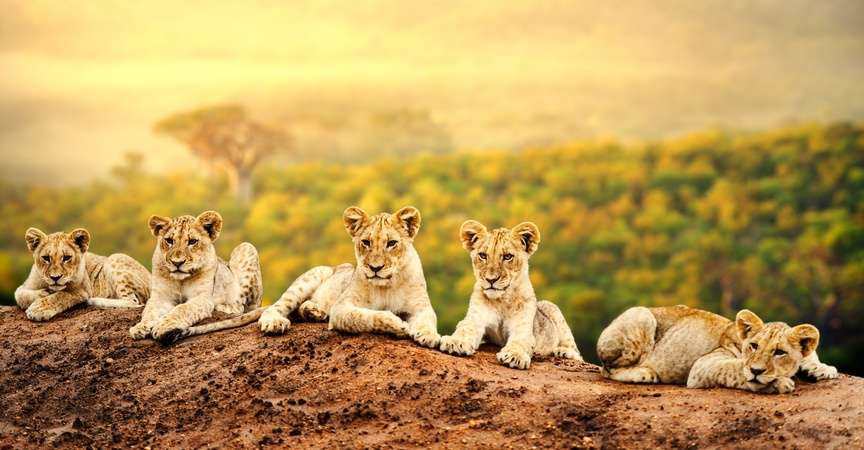Itinerary
Arrive in Cairns, the gateway to Australia’s tropical north and jumping-off point for the Great Barrier Reef and Wet Tropics World Heritage Area, protecting Queensland’s globally important rainforests. A transfer is included to our hotel, where we gather this evening for a welcome dinner with our Expedition Leader.
Day 2: Atherton Tablelands—Lake Barrine / Curtain Fig / Private Bat Hospital Tour
From Cairns, we head inland to the Atherton Tablelands, an uncommon destination for most international visitors to Australia. This large green plateau covered with highland rainforest, savanna and lakes is known for impressive waterfalls and unusual wildlife. In the vine forest at higher altitudes, we find fascinating marsupials and monotremes, including the mainland platypus and Lumholtz tree kangaroo. Tree kangaroos remained undetected by Western settlers until almost the 20th century, being secretive, well-camouflaged canopy dwellers in remote tracts of rainforest.
In Yungaburra, look for elusive platypus swimming in Peterson Creek. We find excellent wildlife viewing and birdwatching at Lake Barrine, a volcanic lake in Crater Lakes National Park. On a forest walk, we may see red-legged pademelon, musky rat kangaroo, snapping turtle giant eel, forest dragon, eastern water dragon, carpet python, saw-shell turtle and Ulysses butterflies. After lunch at Lake Barrine Tea House, we visit the astonishing Curtain Fig Tree, an epic rainforest survivor with its own complex ecosystem. Estimated to be at least 500 years old, this massive strangler fig has an aerial root system that drops 49 feet to the ground. The birdlife heard in the surrounding forest is also impressive. Then we have a private tour of Tolga Bat Hospital, one of Australia’s most acclaimed and innovative ecotourism experiences. Learn about conservation of bats and their habitat through the community group’s rescue and landcare work, advocacy, education and research. Continue to our rainforest ecolodge to spend the next two nights.
Day 3: Atherton Tablelands—Malanda Falls Conservation Park / Hypipamee Crater / Lake Eacham
Our Expedition Leader and local guides take us to little-known spots to search for the hard-to-find Lumholtz tree kangaroo this morning, then on to Malanda Falls Conservation Park, rich in wildlife. More than 50 bird species have been recorded here, with frequent sightings of Wet Tropics endemics like Victoria's riflebird, gray-headed robin and Bower's shrike-thrush, as well as megapodes—the Australian brush-turkey and orange-footed scrubfowl among them. Listen for the whip-crack call of the male eastern whipbird, followed by the gentler reply of the female. The staccato call of the Lewin's honeyeater and “wallack-a-woo” of the wompoo fruit-dove are often heard, too. Skinks are well represented in the park, with six species confirmed. Listen for them scurrying through the leaf litter, and look for them basking in the sun on logs and roots. We frequently see eastern water dragons along the river, or sitting on logs or overhanging branches. Saw-shelled turtles are also common. At Hypipamee Crater, we stop where peregrine falcons are known to nest, then look for more wildlife around Yungabarra. Conclude the day at Lake Eacham to cool off in the clear, pristine water filling an extinct volcanic crater surrounded by rainforest. Once dusk falls, we make use of our lodge's wildlife viewing platform, which is illuminated at night, to spot sugar gliders and striped possums that live in the forest surrounding us.
Day 4: Wildlife and Raptor Care Queensland / Daintree Rainforest—Private Dreamtime Walk
This morning, drive north to Cape Tribulation where two World Heritage Sites and distinct ecosystems—the Great Barrier Reef and Daintree Rainforest—converge. The route to our secluded ecolodge follows the coast before turning deep into the ancient ferns, emerald vines and dense canopy that inspired the film Avatar. En route, stop at Wildlife and Raptor Care Queensland for a private tour of this facility providing care and rehabilitation of raptors and other birds of prey, with an eye to their safe and sustainable release into the wild.
Continuing into the Daintree Rainforest, look for the endangered cassowary, the spectacular Australian bird that stands up to 6-1/2 feet tall. This afternoon, take a private "Dreamtime Walk" in Mossman Gorge. On this meandering stroll through lush rainforest with a local Indigenous guide, learn about traditional plant use, bush food sources, and cultural practices like ochre painting. At the end of the tour, gather around for bush tea and damper, the classic Australian soda bread. Then ferry across the Daintree River, thick with saltwater crocodiles, to reach our destination inside Daintree National Park—land traditionally the province of the Eastern Kuku Yalanji Aboriginal people. This is part of the Wet Tropics of Queensland World Heritage Area, a spectacular region of rugged topography encompassing rivers, gorges, waterfalls and mountains draped in some of the planet's oldest rainforest.
Day 5: Daintree Rainforest—Private Wildlife Cruise / Cairns / Brisbane / Margate
Rise early for a private boat trip on the Daintree River, flanked by dense rainforest and mangroves, to enjoy birdwatching and nature photography in the golden light of morning. Our solar electric boat moves silently through the water as we cruise in search of crocodiles, tree frogs and other wildlife. It's an intimate way to explore the vast Daintree Rainforest, named for 19th-century Australian geologist and photographer Richard Daintree, which is one of the oldest on the planet, dating back 135 million years. Its dense vegetation shelters an unusual array of wildlife, including the musky rat kangaroo and southern cassowary. High in biodiversity, the Daintree holds 30% of Australia’s frog, reptile and marsupial species and 90% of its bat and butterfly species. Some 430 bird species live in the canopy, including the locally endemic tooth-billed and golden bowerbird, lovely fairywren, yellow-spotted honeyeater, Victoria’s riflebird, Bower’s shrikethrush and fernwren. Ancient plant species date to the Jurassic and Cretaceous periods—remnants of the dinosaur age—with wisk and tassel ferns representing some of Earth's earliest land plants. Other ancient flora includes plum pines, southern yews and buny pines.
Then it’s time to return to Cairns, where we catch our afternoon flight to Brisbane. On arrival, transfer to our hotel in nearby Margate where we’ll have dinner and a chance to rest up before tomorrow’s departure for the Great Barrier Reef.
Days 6-8: Margate / Lady Elliot Island—Great Barrier Reef
 Transfer to a nearby airstrip to board our small plane to Lady Elliot Island, situated directly on the Great Barrier Reef. We spend the next several days exploring the southern tip of the world’s largest and most biodiverse coral ecosystem, spanning 1,400 miles in the Coral Sea. The reef sustains an astounding variety of marine life, earning it designations as a UNESCO World Heritage Site and one of the Seven Wonders of the Natural World.
Transfer to a nearby airstrip to board our small plane to Lady Elliot Island, situated directly on the Great Barrier Reef. We spend the next several days exploring the southern tip of the world’s largest and most biodiverse coral ecosystem, spanning 1,400 miles in the Coral Sea. The reef sustains an astounding variety of marine life, earning it designations as a UNESCO World Heritage Site and one of the Seven Wonders of the Natural World.Lady Elliot, a coral cay lying within the reef’s most highly protected Green Zone, is the optimal base from which to explore its wonders. The island's sole accommodation is an award-winning family-run ecolodge focused on reef health and environmental sustainability. Because Lady Elliot Island sits directly on the reef, we can snorkel from the beach as well as on boat excursions. Snorkeling instruction is provided, while certified scuba divers can opt for deeper exploration at 20 dive sites around the island (extra cost). On a glass-bottom boat with local naturalists, view the undersea realm and learn how corals are being impacted by climate change. Other activities include a visit to the historic lighthouse, birdwatching and stargazing.
Day 9: Lady Elliot Island / Margate
We have one more half-day to discover the marine wonders of the Great Barrier Reef from our isolated outpost on Lady Elliot Island. The world beneath the sea is full of wonders, from graceful manta rays and gentle reef sharks to three species of sea turtles and huge schools of tropical fish in shimmering colors. On October and November departures, we may spot humpback whales spouting or breaching. Above the waves, look for seabirds including various terns, noddies, shearwaters, sea eagles and red-billed tropicbirds.
Our unhurried time on the island has given us an appreciation for the ecology of coral reef ecosystems and the conservation challenges they face worldwide. Ultimately, however, it’s time to return to the mainland, and we fly back after lunch, landing at the airfield just 10 minutes away from our hotel in Margate, where we spend another night. Enjoy some free time late this afternoon to relax on your private balcony overlooking Moreton Bay, swim in the rooftop pool, or walk the beach out the front door.
Day 10: Brisbane / Hobart / Bonorong Wildlife Sanctuary Private Tour / Truffle Lodge
Return to the airport in Brisbane this morning for our flight to Hobart, capital of the island state of Tasmania. Lying 150 miles off the southern coast of Australia across the Bass Strait, Tasmania covers more than 26,000 square miles, 42% of which is protected in national parks and UNESCO World Heritage Sites. A legacy of wilderness appreciation is intrinsic to Tasmania, the birthplace of the world’s first environmental political party. The island was occupied by Tasmanian Aboriginals for 30,000 years before the British Empire arrived in the form of a penal colony in 1803.
On arrival, we head to Bonorong Wildlife Sanctuary for a private tour. Come face to face with unique creatures that became extinct long ago in other parts of Australia, and get a peek at rarely seen species such as the eastern quoll and Tasmanian bettong. We have a private lunch with the owner of the sanctuary, with an exclusive behind-the-scenes overview of its impressive conservation efforts. Then continue to Truffle Lodge, a luxury camping outpost in a remote part of the Derwent Valley that is our private accommodation for the next two nights. Once dusk falls, look for echidna, wallabies and pademelon, then enjoy dinner and stargazing from camp, if skies are clear.
Day 11: Private Paddling with Platypus / Mount Field National Park
Wake early and wander the environs of our private camp looking for wildlife. After breakfast, we have a private kayaking tour on the Derwent River, paddling in search of wild platypus that are often spotted just below our tents perched on the bank. This 100-million-year-old semi-aquatic mammal has a duck-like bill, webbed feet and fur, and along with the echidna, it is one of just two egg-laying mammal species on Earth.
This afternoon, we head to Mount Field National Park, Tasmania’s oldest, along with Freycinet, established in 1916. Yet the park has been a nature reserve since 1885, when early white settlers were awestruck by its waterfalls and natural beauty. The region had already been occupied for millennia, however, as the homelands of the Big River nation of Tasmanian Aborigines. They knew this place when it was buried in glacial ice, and later as rainforests and eucalypt forests flourished. Cave sites, ochre mines, hand-stencil art, rock engravings and stone tool quarries provide a glimpse of their extraordinary lives here. Spend the day walking in their ancient footsteps among the tallest flowering trees in the world, and exploring the coastal rainforest. In summer, the high country can be a blaze of color with blooming waratahs, boronias and heath. Weather will determine our activities in the park, but we’re sure to end the day with a sense of wonder at the many treasures it holds. Back at camp, more wildlife watching awaits this evening, as well as time around the fire under the stars.
Day 12: Central Plateau Conservation Area / Marakoopa Cave Private Tour / Cradle Mountain National Park
This morning, we begin a half-day’s drive to northern Tasmania, stopping en route at the Central Plateau Conservation Area, a wild realm of subalpine moorlands and countless tarns. In the isolated heart of Tasmania away from major roads, the region is known for its wilderness hiking and world-class trout fishing. We stop to admire the view of Great Lake and look for echidnas, yellow-tailed black cockatoos and Tasmanian wedge-tailed eagles, among other birdlife.
After lunch, continue to Marakoopa Cave in Mole Creek Karst National Park for a private tour of this dramatic limestone cavern. This immense structure contains two underground streams, large vaulted chambers, expanses of glittering flowstone and dramatic stalagmites, plus a sparkling display of bioluminescent glowworms. Then it’s on to our lodge on the edge of Cradle Mountain National Park where we settle in before an evening outing to seek out wildlife abundant nearby. Keep an eye out for wallabies, echidna, pademelons and wombats as they come out around dusk and are often spotted in the vicinity of our lodge.
Days 13 & 14: Exploring Cradle Mountain–Lake St. Clair National Park / Private Tasmanian Devil Encounter
Over the next two days we delve into Cradle Mountain-Lake St. Clair National Park, part of the Tasmanian Wilderness World Heritage Area. This UNESCO-protected realm covers 3.7 million acres, one-fifth of Tasmania’s landmass. The park’s imposing peaks, lakes and glacier-sculpted valleys comprise some of Australia’s most stunning landscapes. Cradle Mountain, rising to 5,069 feet, is surrounded by diverse habitats of grassland, temperate rainforest and ancient plants that date to the supercontinent of Gondwana, including the King Billy pine, deciduous beech and pandani, the world’s tallest heath plant. We hike around Dove Lake, gleaming sapphire-blue beneath Cradle Mountain’s jagged profile, and stop at some waterfalls. Wildlife abounds in the park, and we seek it out on walks at dawn and dusk. We'll also take a night walk in search of difficult-to-spot wildlife, and while our odds are very slim, we'll hope for a glimpse of an elusive quoll or Tasmanian devil. We're more likely to spy wallabies, pademelon and echidnas, and wombats—a cuddly cousin to the koala—are prevalent here, although no koalas exist in the wild in Tasmania.
We will get a peek at Tasmanian devils on a visit to a nearby conservation sanctuary, however, where staff work to protect and sustain the mysterious marsupial. Our visit offers a rare opportunity to see and learn about these hard-to-find nocturnal species that are endangered in the wild. The sanctuary is involved with breeding, release and re-introduction of Tasmanian devils, in addition to field monitoring of wild populations and orphan rehabilitation. It also houses the closely related spotted-tail and Eastern quolls, offering a trifecta of Tasmania’s three largest carnivorous marsupials. If our timing is right, we may even witness a feeding.
Day 15: Cradle Mountain / Private Flight to Hawker / Ikara-Flinders Ranges National Park
Keeping an eye out for some last sightings of wombats, wallabies and pademelons as we leave the lodge, we drive this morning to Devonport on Tasmania’s northern coast. From here, catch a private chartered flight to Hawker in the state of South Australia, our gateway to the Outback in the Flinders Ranges. Once we land, we drive 30 minutes to Rawnsley Park Station and check in to our luxury eco-villas, just minutes outside Ikara-Flinders Ranges National Park—our base for a full slate of activities ahead.
Spanning nearly a quarter-million acres, Ikara-Flinders Ranges National Park is an ancient, semi-arid landscape of rocky mountain ranges, tree-dotted gorges and a wealth of seasonal wildlife. It has been the home of the Adnyamathanha people for tens of thousands of years, and the Wilpena Pound area, a natural circular mountain amphitheater, is known as Ikara, or “meeting place,” to its traditional inhabitants. The park holds many culturally significant sites, including ancient rock art, and during our visit, we'll discover the wealth of nature and human heritage that defines the region. Begin to get a feel for the Outback on an evening nature walk as we look for western gray kangaroos, wallaroos and emus.
Days 16 & 17: Exploring the Outback in Ikara-Flinders Ranges National Park
Spend two full days exploring a vast tract of rugged wilderness that few visitors to Australia get to experience, as we survey highlights of Ikara-Flinders Ranges National Park. During our visit, we tour Sacred Canyon with an Aboriginal guide from Adnyamathanha Country and walk to a rock art site more than 65 thousand years old, where we learn the cultural significance of the stories these ancient engravings reveal. Wildlife drives are likely to reveal kangaroos, emus, wallaroos and more as we learn about local history and culture along the way, including bush tucker. Bush walks round out our exploration of the region's wild terrain, as we discover how the ancient sea floor was uplifted and eroded to create this amazing landscape. Drink in exhilarating views of Wilpena Pound and the Bunyeroo Valley as we make our way to Brachina Gorge to observe some of the oldest fossils on the planet. Meandering through the impressive rock formations, keep an eye out for endangered yellow-footed rock wallabies. Other species we might see during our time in the park are tawny dragons, red-barred dragons, sand goannas, shingleback lizards, skinks, rainbow bee-eaters and the short-beaked echidna. A sunrise visit to the Cazneaux Tree offers a chance to look for rare red kangaroos. The tree is a lone river red gum made famous by photographer Harold Cazneaux in a 1937 image that brought him international recognition. It has remained an important landmark since, attracting other photographers and artists.
During our stay, we also learn about operations on a working Australian sheep ranch as we tour Rawnsley Park Station. The station runs approximately 2,000 sheep on more than 29,000 acres of land, raising Australian Merino and South African Dohne sheep for high-quality wool and meat. Hear about the pastoral history of the region and how these sheep prosper in this arid climate, learn how the wool is sorted and prepared for sale, and tour the property while checking on the watering points, equipped with windmills and solar pumps. Learn, too, about Operation Bounceback, a feral animal control program established in 1993.
Day 18: Australian Outback / Private Flight to Kangaroo Island
After breakfast, transfer back to the airport for our private chartered flight to Kangaroo Island. With more than 300 miles of coastline surrounded by turquoise waters, Australia’s third-largest island is famous for its pristine beaches, local wines and abundant wildlife that the island's isolation has naturally protected. “KI,” as it's known by locals, lies less than 10 miles off the mainland, but its offshore status helps sustain considerable numbers of native Australian species, including kangaroos, wallabies, echidnas, New Zealand fur seals, Australian sea lions and one of Australia’s largest koala populations. On arrival, we head to Cygnet Park Sanctuary, a haven for native island vegetation where we find significant populations of nationally threatened plant species. On a tour of the property, we’ll get an overview of the park’s revegetation program and glossy-black cockatoo recovery project as we do some birdwatching, seek out koalas, and have an orientation to the island over a seafood barbecue lunch. Then it’s off to Seal Bay Conservation Park for a private tour among Australian sea lions sprawled along a sandy beach— an endangered species nearly hunted to extinction in the 19th century. Today, about 800 of them thrive here, one of Australia’s largest sea lion colonies. We watch pups nursing or playing in the surf, see old bulls scarred by territorial disputes, and learn about their unique breeding biology.
Continue to Stokes Bay to explore a range of varied habitats from scrub to woodland to rocky shoreline and sandy beach. Within these varied environments, we may encounter tammar wallabies, koalas, glossy-black cockatoos, Australian pelicans, hooded plovers, and a unique subspecies of kangaroo found only on the island. Along the way, we observe the way native plants have adapted to bushfires, before returning to our hotel where we gather for dinner later this evening.
Day 19: Kangaroo Island—Pennington Bay / Baudin Conservation Park / Cape Willoughby
At Pennington Bay, look for hooded plovers and other shorebirds on the beach, and climb the steps to the top of Prospect Hill for a vantage over the narrowest section of Kangaroo Island. We take a walk with a researcher who is a world expert on the short-beaked echidna—an ancient egg-laying mammal that once roamed with dinosaurs—as we delve into the ecology of the island. After a picnic lunch on Eastern Cove, visit Baudin Conservation Park to learn about the elusive glossy-black cockatoo. The park was a family farm from 1861 to 2002, comprised of she-oak woodland rolling hills with sweeping views across Backstairs Passage to the Fleurieu Peninsula. We may also see tammar wallabies, Kangaroo Island kangaroos, wedge-tailed eagles and small penguins that nest along the shoreline, and look offshore for dolphins and southern right whales. At Cape Willoughby, explore the exposed granite shoreline near the lighthouse, scouting for coastal raptors and oceanic seabirds from the exposed promontory.
Day 20: Flinders Chase National Park
Spend the entire day exploring Flinders Chase National Park, one of the oldest in Australia and renowned for its geological phenomena and thriving populations of endangered species. View the massive shapes of the Remarkable Rocks, formed by 500 million years of wind, waves and rain that have left them impossibly perched on top a granite dome plunging into the ocean. Break for lunch with a gourmet bush picnic, then continue to Admirals Arch, a rock bridge and coastal grotto that provides a haul-out for a large colony of long-nosed fur seals. Seabirds flourish here, too, and we may see a range of terns, Australasian gannets, shearwaters, Pacific gulls, and potentially some southern emu-wrens.
Day 21: Kangaroo Island / Adelaide / Depart
Our grand Australia nature safari comes to a close this morning. A transfer to the airport is included for your scheduled flight from Kangaroo Island to Adelaide. From the airport in Adelaide, connect with homeward flights.
